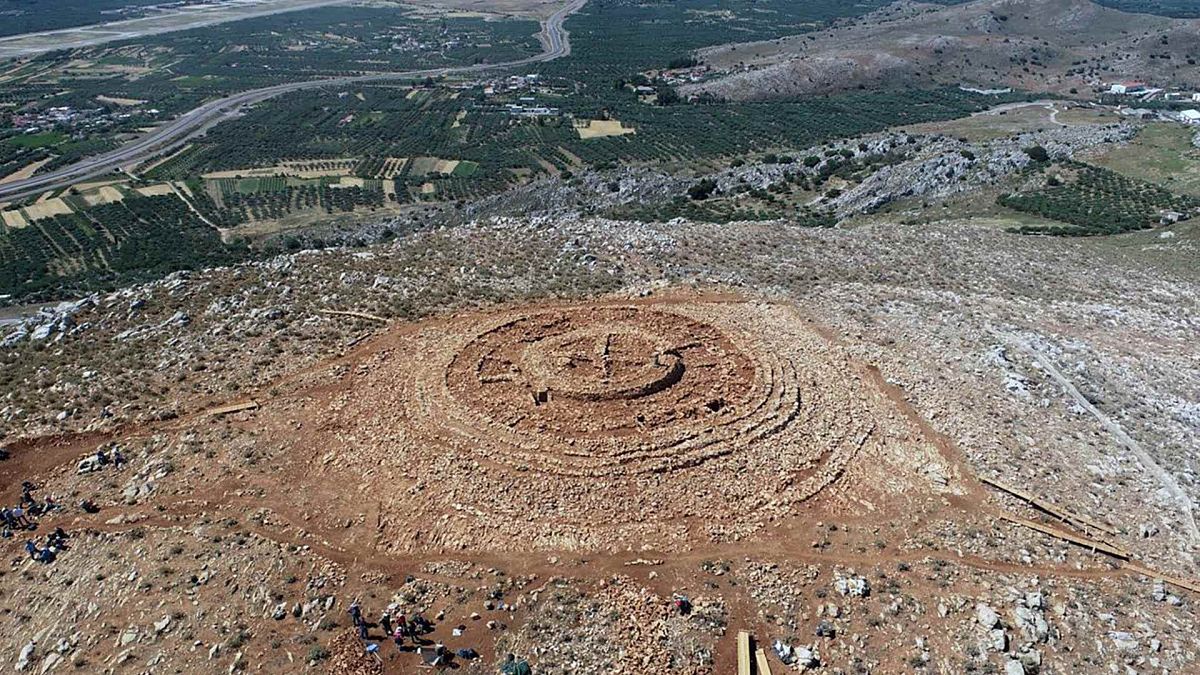‘Unique’: Will archeological finding halt construction of new airport?

The airport is projected to be Greece’s second biggest when it opens.
An archeological discovery in Crete is puzzling experts – and could stand in the way of a major new airport which is under construction.
The round stone building was uncovered by archaeologists on the site where the new Greek airport’s radar station was meant to be built.
The original purpose of the building is puzzling experts. “It may have been periodically used for possibly ritual ceremonies involving consumption of food, wine, and perhaps offerings,” Greece’s Culture Minstry said in a statement.
It has been decided that the discovery will not stop the airport being built. Greece’s Culture Minister Lina Mendoni pledged that the find would be preserved while a different location would be sought for the radar station.
“We all understand the value and importance of cultural heritage … as well as the growth potential” of the new airport project, says Mendoni, who is herself an archaeologists.
“It’s possible to go ahead with the airport while granting the antiquities the protection they merit.”
Set to open in 2027, the Crete airport is projected to replace Greece’s second-biggest airport at Heraklion, and designed to handle up to 18 million travelers annually.
It’s one of 35 archeological finds at the site
Greece’s Culture Ministry said this week that the structure is a “unique and extremely interesting find” from Crete‘s Minoan civilisation, famous for its sumptuous palaces, flamboyant art and enigmatic writing system.
It’s not the first finding at the airport site. So far, at least another 35 archaeological sites have been uncovered during work on the new Kastelli airport and its road connections, the ministry said.
At the end of the last century, an entire hilltop fortified settlement from the 3rd millennium B.C. was excavated and then destroyed during construction work for Athens International Airport.
‘Unique and extremely interesting find’
Resembling a huge car wheel from above, the ruins of the labyrinthine, 1,800-square-metre (19,000-square-foot) building came to light during a recent dig by archaeologists.
The site was earmarked for a radar station to serve a new airport under construction near the town of Kastelli.
Archaeologists don’t yet know what the hilltop structure was for. It’s still under excavation and has no known Minoan parallels. So for the time being, experts speculate it could have been used for a ritual or religious function.
Ringed by eight stepped stone walls up to 1.7 metres (5.6 feet) high, the inner structure was split into smaller, interconnecting spaces and may have had a shallow conical roof.
The ministry’s statement said it didn’t appear to have been a dwelling, and the finds from inside it included a large quantity of animal bones.
“Its size, architectural layout and careful construction required considerable labour, specialised know-how and a robust central administration,” it said, adding it was certainly some kind of communal building that stood out in the entire area.
The ministry said the building was mainly used between 2000-1700 B.C, and was founded around the time Crete’s first palaces were being built – including at Knossos and Phaistos.
It said some of its features were comparable with early Minoan beehive tombs that were surmounted by stepped conical roofs and burial mounds in other parts of Greece.
Related
Brits forced to pay fee to visit these 30 countries…
UK tourists will be required to pay a fee to visit 30 countries in Europe under new European Union (EU) travel rules.The rules mean British holidaymakers will n
The beautiful European island with just 148 locals
Irakleia is a beautiful island in the Minor Cyclades of Greece, nestled in the heart of the Aegean Sea and just an hour away from Naxos. Officially recorded t
Warning issued for Brits flying easyJet and Ryanair to popular…
Passengers flying with Ryanair, easyJet and British Airways should expect disruption (Picture: Urbanandsport/NurPhoto via Getty Images) Passenge










